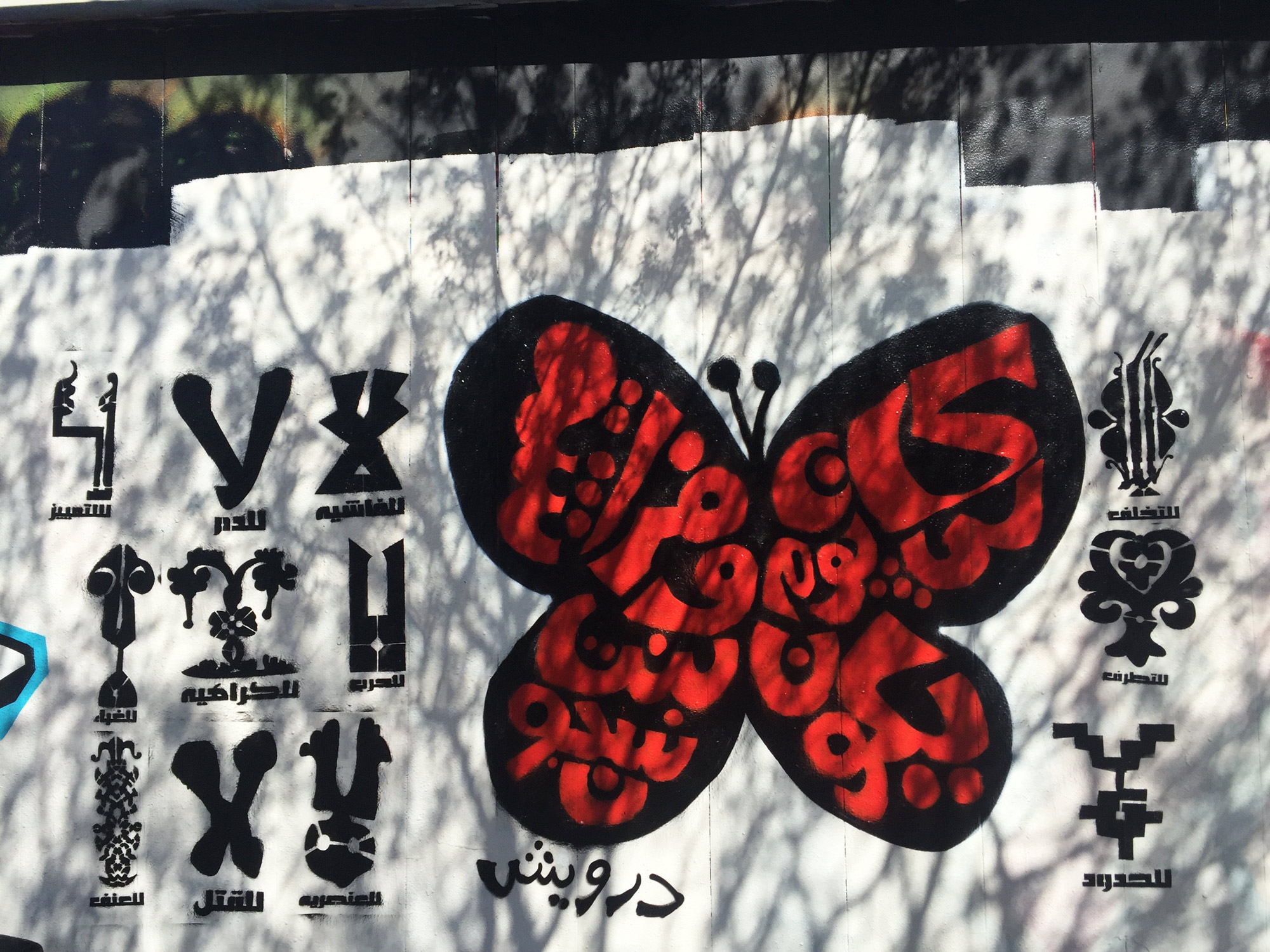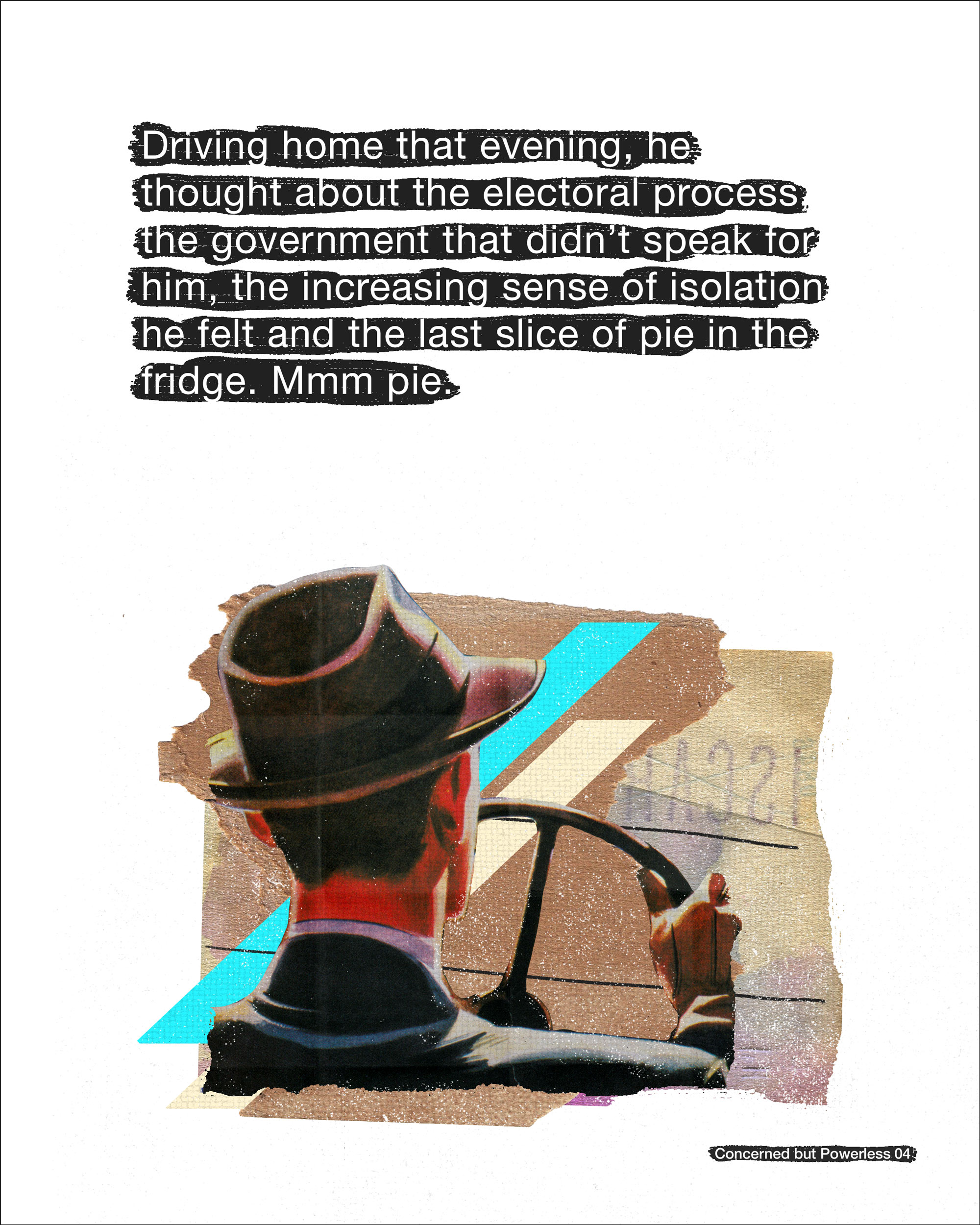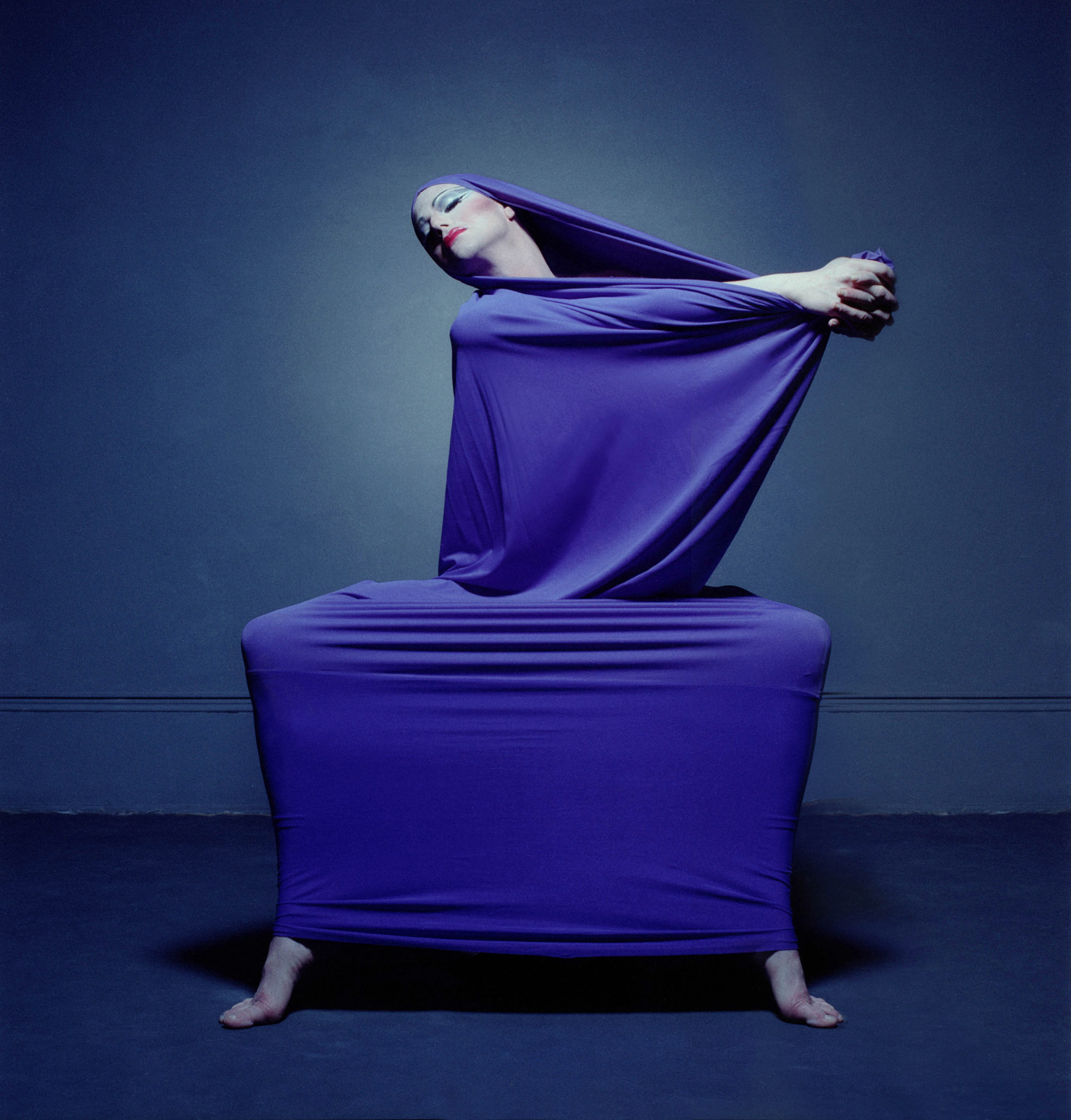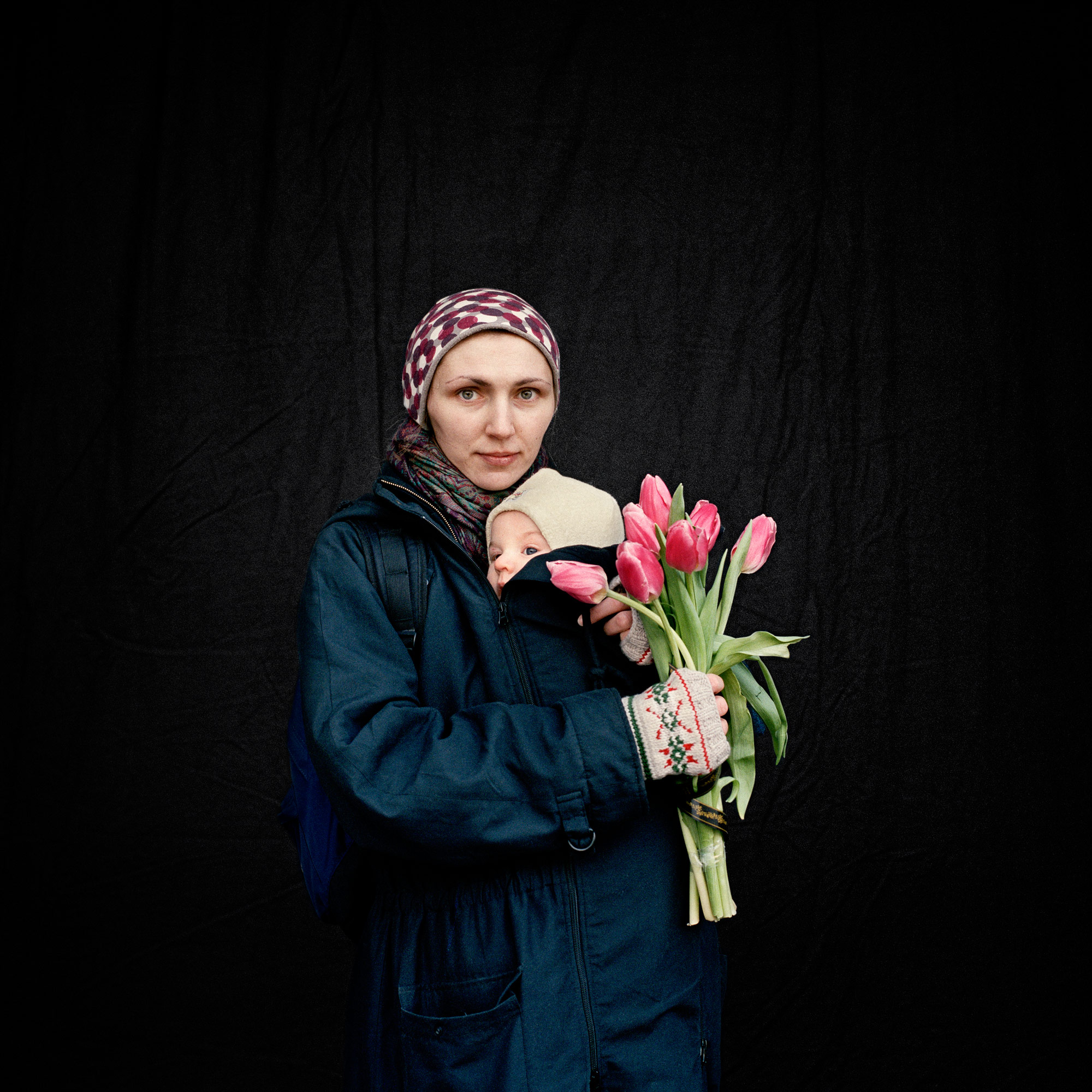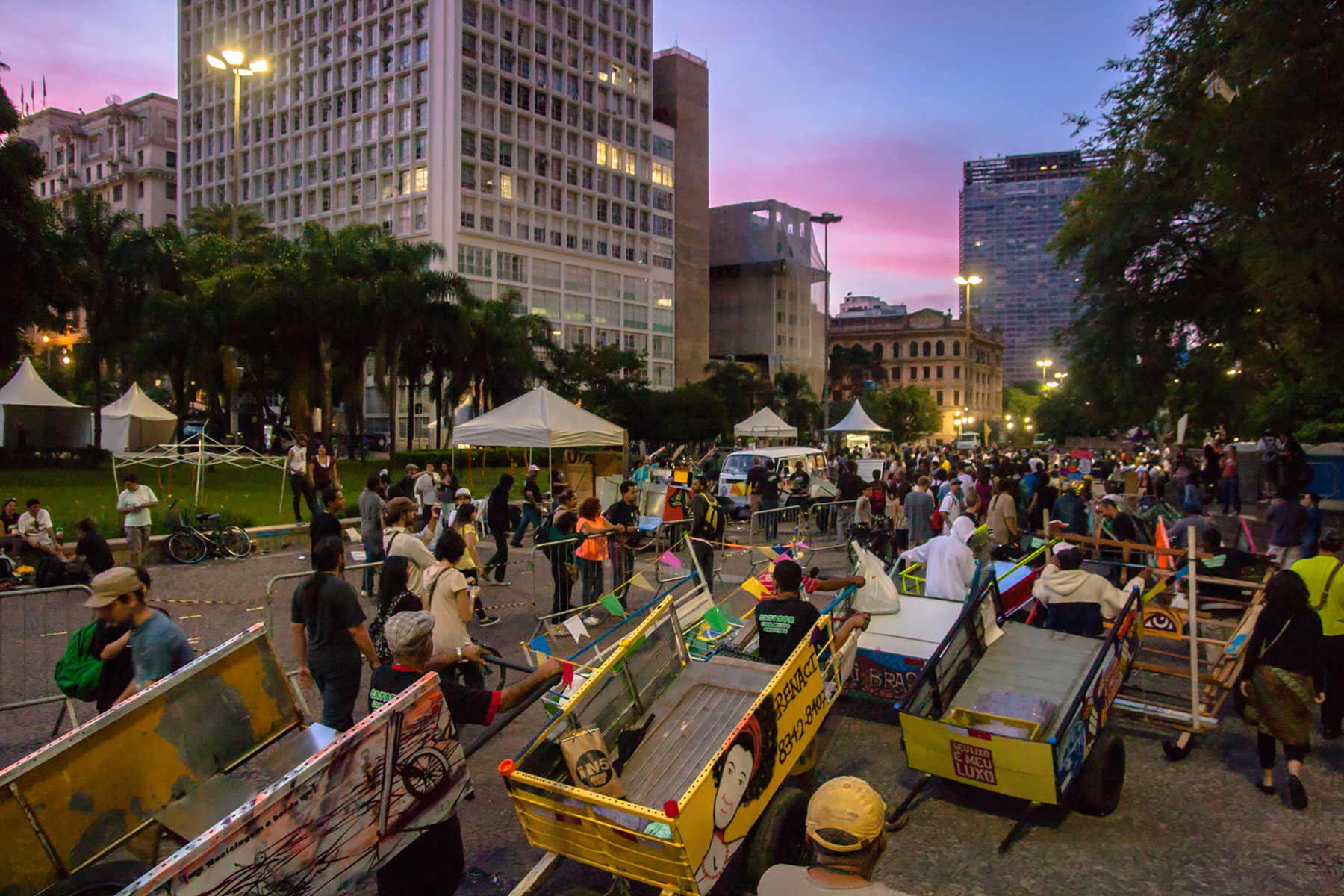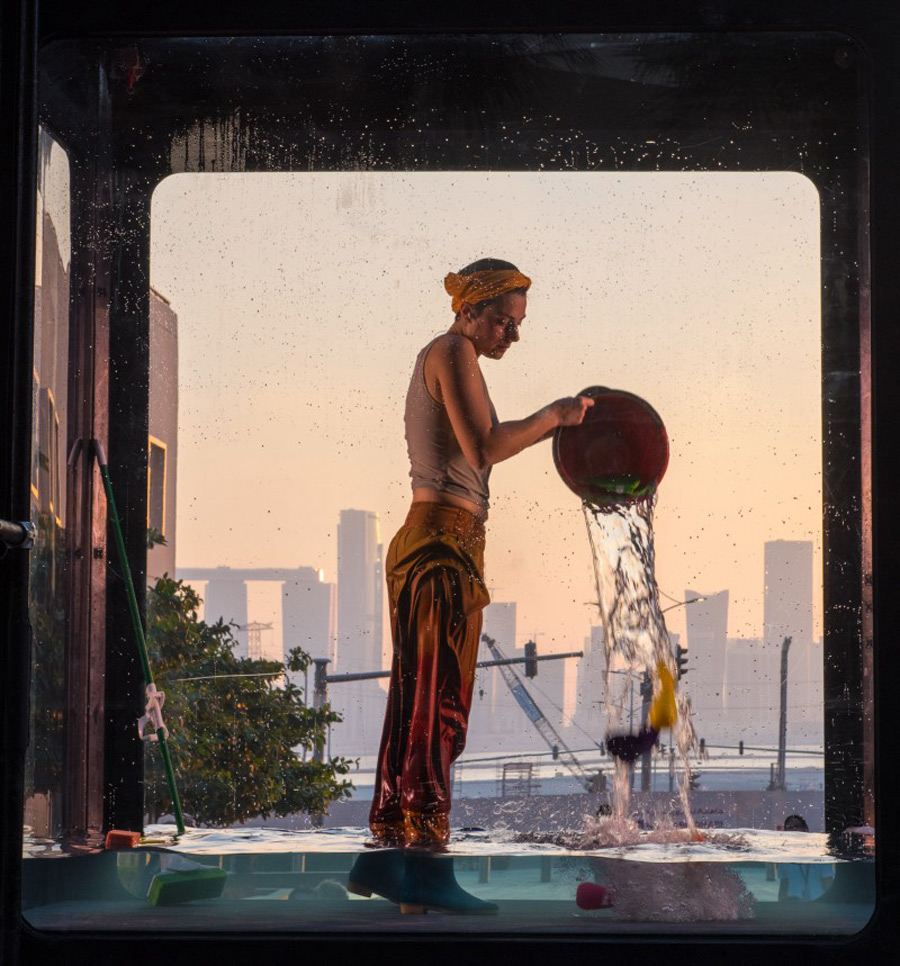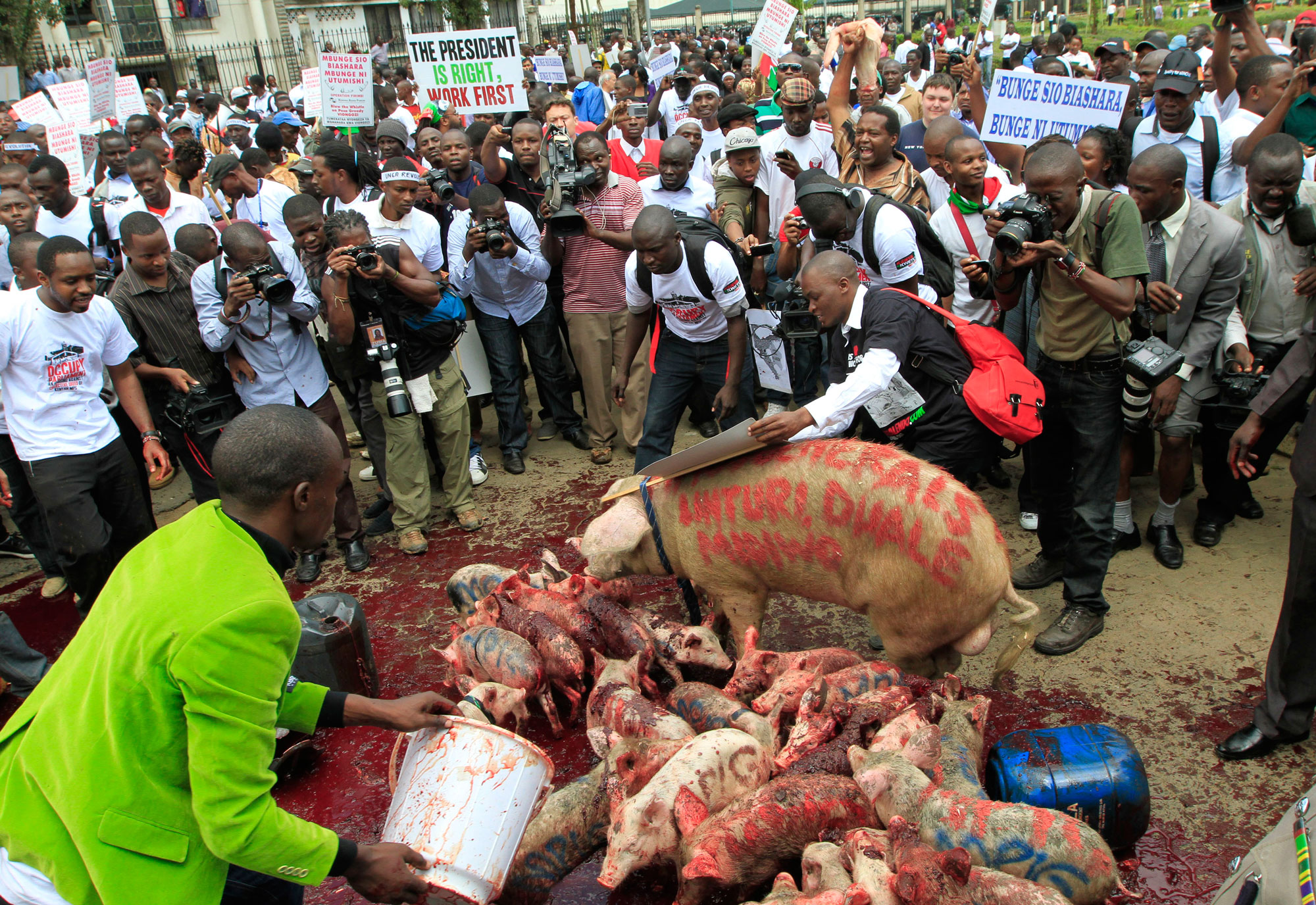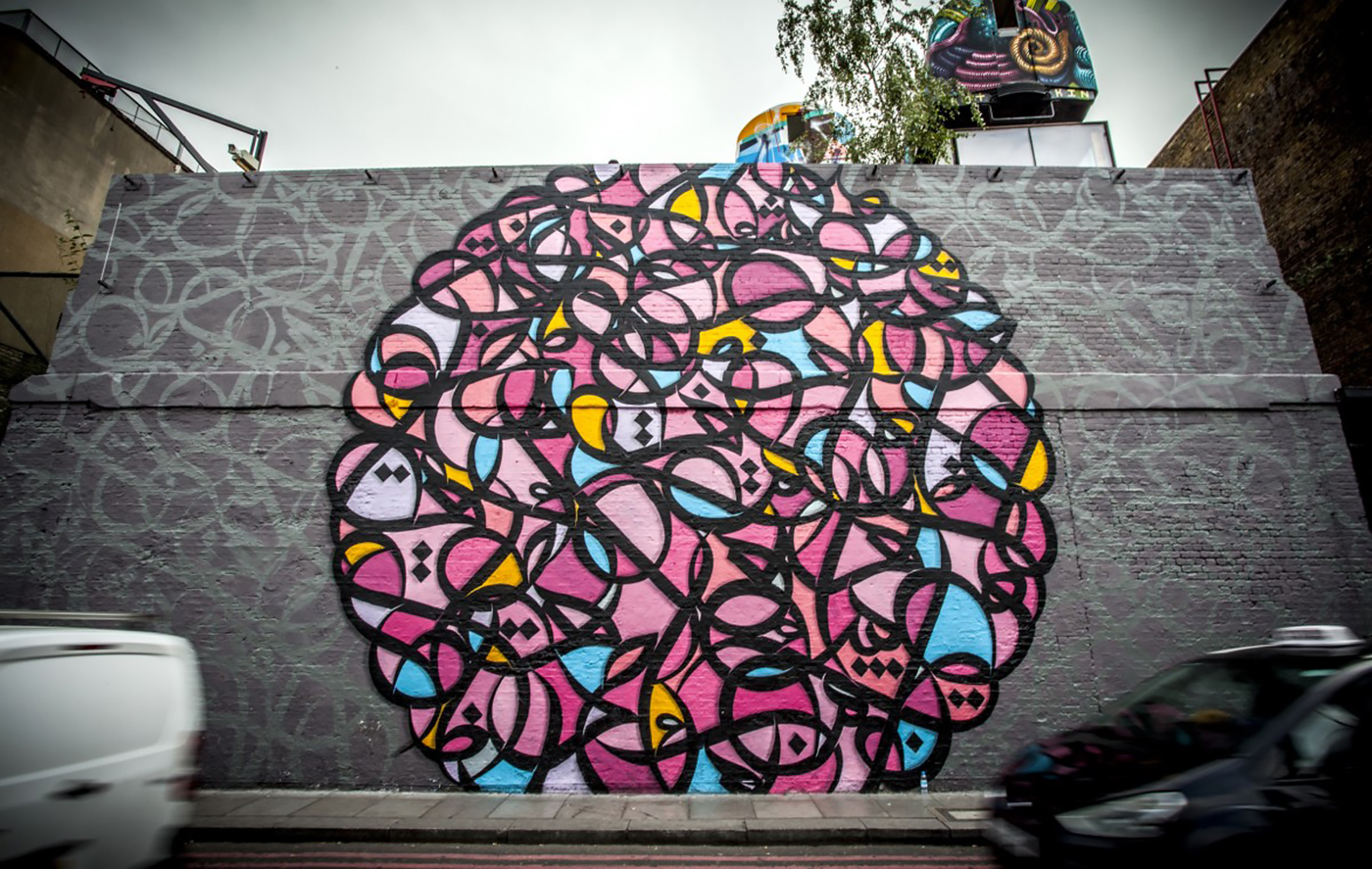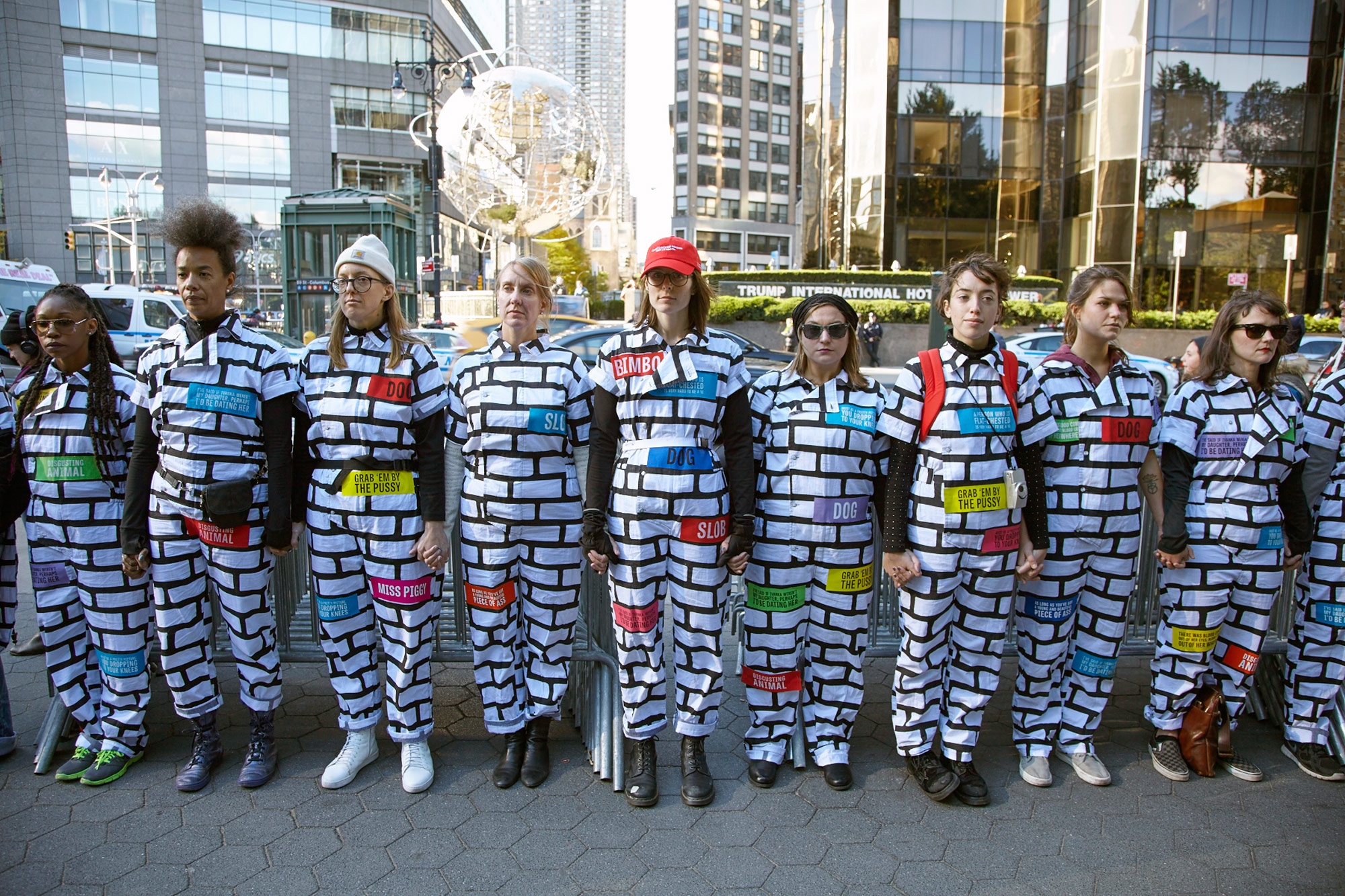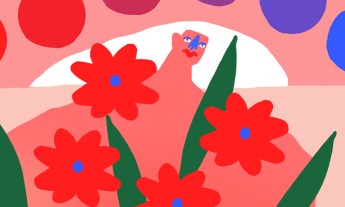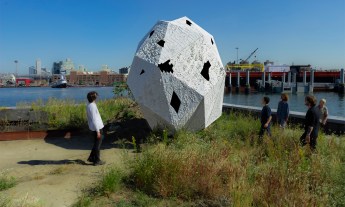Will the societal shocks of 2016 lead to a bumper crop of art in 2017 and beyond? These TED Fellows channel the energy of activism into creative work that can change hearts and minds.
There is a debate going on in artistic circles: Will the unsettling political era ahead push people to create more exciting art and music? But the real answer is: Art has always been a platform for commentary and protest. In a gallery of images, meet 12 TED Fellows who inspire us by producing pieces that fight injustice, spark dialogue and thought and provoke action.
Madeline Sayet: Unheard voices, playing with Shakespeare
“For Native peoples, even being allowed to exist is still considered a political act,” says Native American director, writer and performer Madeline Sayet. Through the Native Shakespeare Initiative (part of AMERINDA), Sayet stages the Bard’s plays with 100 percent Native casts, giving her actors a chance to inhabit roles that have traditionally been off-limits to them and creating a fresh context for familiar, centuries-old words. “Filling the stage with Native artists gives us an opportunity to build a world in which we are allowed to exist beyond the confines of a single tokenized Native character or redface,” says the New York City–based Sayet, a member of the Mohegan tribe. Through direction, casting and staging choices, she also highlights other ideas that are important to her — in a recent production of The Winter’s Tale, she brought out themes of female empowerment, environmental protection and the destruction of Native languages.
Bahia Shehab: A message of hope to silenced revolutionaries
During the Egyptian uprisings of 2011, Cairo resident and artist Bahia Shehab (TED Talk: A thousand times no) took to the streets of her city to add a splash of color. With spray paint and stencils, she decorated walls with a variety of Arabic characters — gathered from Islamic cultures all over the world including Spain, Afghanistan, Iran and China — all saying the word “no.” Since then, her country’s government has cracked down on street expression and opposition voices. Shehab has taken her message elsewhere, painting quotes from Palestinian poet Mahmoud Darwish on walls around the world, in cities such as Vancouver, Marrakesh, Tokyo and Amsterdam. It’s her way of sending a message of hope and encouragement to silenced revolutionaries — to tell them not to give up. “Darwish’s work is very relevant to Arab youth around the world, as well as within the Arab world,” she says. “With very simple words, he communicated ideas about dignity, hope, pride, self respect, change — and most important, believing in and fighting for your dreams.” In Beirut, for example, she posted the Darwish quote, “My country is not a suitcase.” Shebab explains, “With a history of wars in the Arab world, millions of people have been displaced. This quote is about people’s right to their land, their right to belong — and not have to live from a suitcase.”
Safwat Saleem: Scoffing at complacency
Satirist and artist Safwat Saleem (TED Talk: Why I keep speaking up, even when people mock my accent) skewers everything from social injustice to racism to human stupidity in his colorful, often bitterly poignant work in a variety of media, including illustration, writing, animation, audio, film and sculpture. In a recent art series, Concerned but Powerless, the Arizona-based Saleem draws from his own experience as a Muslim in America during the 2016 election: “As the anti-minority sentiment became increasingly acceptable, I felt that no matter what I said or did to make myself heard, it was simply not enough because of my name or what I look like or where my parents came from. When I got tired of feeling that way, I turned to eating pizza — lots of pizza. When that didn’t work, I made some art.” By poking fun at the sense of impotence and frustration that he and many Americans felt during the presidential election, Saleem showed how humor can be a tool to nudge people out of resigned apathy and into action.
Richard Move: Dancing for LGBTQ communities under siege
Dancer and choreographer Richard Move deploys dance to explore and experiment with a non-binary view of gender, gender nonconformity and gender identity. Move, who is based in New York City and best known for his portrayal of Martha Graham in a two-decade-long (and counting) performance series Martha@…, is currently rehearsing XXYY, a new piece inspired and informed by the work of two historical figures: Earl Lind, one of the earliest known trans individuals in America and author of Autobiography of an Androgyne (1918), and Alessandro Moreschi, the Vatican’s last castrato. “I feel that both Moreschi and Lind sacrificed themselves for the betterment of humanity,” says Move. “The essence of these very special beings is more relevant than ever as LGBTQ lives, and in particular trans lives, are more under siege than ever.”
Anastasia Taylor-Lind: Capturing lives caught up in war
During Ukraine’s Independence Square protests in February 2014, British documentary photographer Anastasia Taylor-Lind (TED Talk: Fighters and mourners) chose not to document the skirmishes but to focus on the individuals involved. She set up a makeshift photo studio inside the barricaded square and asked passing anti-government protesters to sit for her. As the battle wore on, rebels died and women arrived in the square to mourn their deaths, all carrying flowers. “They started laying the flowers at the points where people had died, which you could tell because there was the blood on the ground. People set up small shrines and put crosses there. Eventually the whole square was covered in millions of flowers.” Her quiet yet powerful portraits serve as a profound reminder of the ordinary people who fight and suffer in conflicts.
Mundano: Crusading with color
Brazilian street artist Mundano (TED Talk: Pimp my…street cart?) cleverly calls attention to social, environmental and political issues with bright color and smart humor. In his project Pimp My Carroça, which began in 2012, he helped customize the carroça, or carts, pulled by local waste pickers, to highlight the critical role they play in cities around the world. As of 2016, 507 carts in 32 cities had been painted with the help of 1,443 volunteers and 2,686 donors. For the 2014 Brazilian presidential elections, Mundano erected a trash bin in the shape of an electronic voting booth and filled it with election ads. “I use the ads to get people to reflect on the corrupted political system — on all the false promises and all the awful waste,” he says. In 2015, Mundano investigated the water crisis in his hometown of São Paulo as well as in California by photographing drought-afflicted sites, punctuating them with a bright-green cactus sculpture built from recycled water pipes. “In California, I had a feeling: the water will end,” says Mundano. “I’m not talking about the water that we will leave for our children but the water we need next year. We need citizens to mobilize to reverse this scenario.”
Lars America Jan: A witness to the rising tide
It’s a dramatic and startling sight. A man struggles to make a bed, a woman to sell oranges, a man to play a guitar, and so on — but all of them are performing these everyday activities immersed in a tank filled with water surging and falling at varying speeds. Lars America Jan’s public-performance installation HOLOSCENES — which has been on display in Toronto, Sarasota, Miami, Athens, London and Abu Dhabi during the past two years — tackles the climate change-associated problems of rising water levels and weather-induced flooding. HOLOSCENES, which adjusts the height of the water based on an Internet stream of live environment data, not only serves as a metaphor for how global warming is making life for ordinary people more difficult, but also illuminates our collective myopia in the face of such a huge environmental crisis. As Jan, who is based in Los Angeles, asks, “Are we, as individuals, communities and a global society capable of evolution in terms of recognizing complex, long-term patterns and then adapting our everyday behaviors based on that rational understanding?”
Boniface Mwangi: Art that stares down corruption and violence
When election violence broke out in Kenya in 2007, photojournalist Boniface Mwangi (TED Talk: The day I stood up alone) made it his responsibility to document and share the devastating reality with his fellow citizens. The horrors he witnessed pushed him out of his role as impartial journalistic observer, and he soon found himself standing up to confront government officials, risking his life in the process. Mwangi, a Nairobi resident, is now a full-time activist, using public actions and graffiti art to protest official corruption. He founded PAWA254, a community of filmmakers, graffiti artists, writers, poets, journalists and advocates that offers workshops on photography, citizen journalism, videography and graffiti. “We have made a choice to creatively use art and culture to continue making a contribution toward the struggle for good governance and accountability,” says Mwangi. “At the center of our work is our deep love for our country.”
Sanford Biggers: Resculpting the history of race in the US
Sanford Biggers’ pieces are beautiful but have a razor-sharp edge. A glass panel edged with a lotus flower reveals, on closer inspection, diagrams of slave ships; a tree growing through a piano is playing “Strange Fruit,” a song memorializing victims of Southern lynchings. For his piece, BAM, Biggers (TED Talk: An artist’s unflinching look at racial violence) took wooden African sculptures collected from tourist shops around the world, dipped them in wax, took the figures to a shooting range, and “resculpted” them with bullets. The African-American artist’s work intentionally provokes uncomfortable conversations about race and oppression in the United States. “These artworks memorialize victims of racial violence in US history,” he says. “These killings have been going on for more than 500 years. Through more thoughtful dialogue about history and race, we can evolve.”
Laura Boushnak: A witness to women insisting on education
In her series I Read, I Write, Kuwaiti-born Palestinian photographer Laura Boushnak (TED Talk: For these women, reading is a daring act) turns her lens on girls and women in the Arab world motivated to improve their lives through education — an act of courage in a culture that frowns upon it. The portraits are meant not only to show their struggles to the world but also to offer a beacon of hope. “When I work on stories full of problems and misery, I try to find a positive aspect that might inspire, prompt change and provide a solution,” says Boushnak. “I’ve noticed that when I focus on successful stories of women from the region, it influences other young women. Offering role models proves to others it’s possible to make it, despite obstacles.”
eL Seed: A call for unity and collective responsibility
Street artist eL Seed (TED Talk: A project of peace, painted across 50 buildings) delivers messages of inspiration and hope in a lush script all his own, inspired by the ornate curves of classical Arabic. In 2012, he painted a message of unity on a 47-meter-high minaret on the Jara mosque in his home town of Gabes, Tunisia. With a quote that read “O humankind, we have created you from a male and a female and made you people and tribes, so you may know each other,” the art was a call for peace and unity at a time when secular and religious people were clashing in Tunisia over the freedom of artistic expression. Since then he has painted spectacular pieces all over the world, including a spectacular anamorphic work in Cairo spanning more than 50 buildings and celebrating the city’s garbage pickers. The piece pictured above was painted in London in 2015, weeks after the massacre in Sousse, Tunisia, and the shooting in Charleston, South Carolina. Sharing the quote “It is one thing to show a man that he is in error, and another to put him in possession of truth” from philosopher John Locke, the piece invites dialogue about collective responsibility. Says eL Seed, “War is individualistic — we always put blame on someone else. But the responsibility lies with all of us to find a way to keep it from happening again.”
Sarah Sandman: Building a wall against misogyny
Dog. Degenerate. Bimbo. These were just a few of the epithets that Donald Trump leveled at women during his 2016 US presidential campaign. Artist Sarah Sandman responded with Brick x Brick — she designed jumpsuits featuring a brick wall design, with each colorful brick containing a disparaging word or phrase said by the then-candidate. Then, she put out a call for citizens to wear the jumpsuits at protest events in eight swing states before the election. “We were appropriating his divisive language of walling people out of our country, and with it constructing a wall of unity,” says Sandman.


